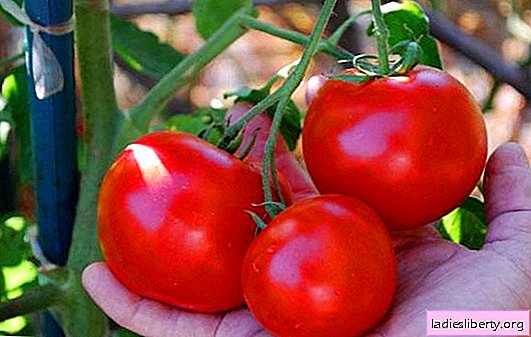
Milk thistle is a medicinal plant that contains silymarin, flavonoids, biogenic amines (histamine, tyramine), organic acids, mucus, vitamins C and K, phytosterols, tannins, proteins and sugars. The most important is silymarin, which has a powerful antioxidant effect.
The anti-inflammatory, regenerative, and stimulating production of new liver cells has been proven in clinical trials. Milk thistle protects the liver from numerous poisons: alcohol, carbon disulfide, pesticides, and even poisons of amanite phalloids. The plant strengthens the walls of blood vessels, increases the secretion of digestive juices and improves digestion. Milk thistle inhibits the activity of cytochrome P450 and other enzymes, which leads to a decrease in the effect of metronidazole (by 50%) and indinavir (1-2%).
Milk thistle: medicinal properties of the plant
The healing properties of milk thistle have been used for medical purposes for centuries. Sylmarin is used in chronic liver diseases and gallbladder disorders. Silibinin or its derivative is used in case of poisoning by amanites. Milk thistle is also often used to support the liver when prescribing oral 17a-methylsteroids. In vivo studies, it was found that the plant lowers the concentration of low density lipoproteins (LDL).
The therapeutically effective active ingredients of milk thistle are mainly found in black seeds. The active ingredient silymarin consists of silibinin, isosilibinin, silichritin and silidianin. The fruit also contains high-fat oil, vitamin E, protein and flavonoids.
Silymarin has an antispasmodic effect, stimulates the production of bile and protects the liver. Silymarin strengthens the outer membrane of the cell membrane. Thus, not only less toxins enter the liver cells, but also important cell components are preserved. If the cells are already damaged, silymarin helps them recover faster. Toxins that threaten liver cells can be, for example, alcohol, drugs, drugs, or environmental toxins.
Flavonoids are usually found in high concentrations in the shells or leaves of plants. They are not only responsible for coloring, but also protect the plant from the harmful effects of the environment. The use of flavonoids has a calming and anti-inflammatory effect.
The liver plays an important role in metabolic processes. If the body is struggling with too many poisons - alcohol or environmental toxins - it can be weakened and limited in its function. Hepatic dysfunction can also adversely affect other organs. Chronic inflammatory liver diseases can be treated with milk thistle in moderate doses and as directed by a doctor.
Milk thistle: indications for use
1. Functional disorders of the biliary tract.
Doctor's comment:it is believed that the leaves and aerial parts of milk thistle contribute to bile outflow and are used as maintenance therapy for diseases of bile and liver. However, clinical efficacy in gallbladder disease has not been identified in any large randomized trial.
2. Rheumatoid arthritis, systemic lupus erythematosus and other systemic rheumatic diseases.
Doctor's comment: A 2011 meta-analysis examined the effectiveness of milk thistle in rheumatism and migraine. The medicinal plant does not reduce joint pain, the degree of inflammation, and pain with rheumatoid arthritis. It was also revealed that milk thistle is not only ineffective for migraines, but can also aggravate its course. It is recommended to abandon the use of the plant with these two indications, since the effectiveness has been disproved.
3. Chronic inflammatory disease of the liver.
Doctor's comment:the main indication of milk thistle is inflammatory liver disease. fruit extracts have hepatoprotective effects that are attributed to silymarin and flavonoids. These substances prevent the absorption of toxins by the cell membrane in the liver. They trap free radicals and also accelerate liver regeneration.
As a result, toxic liver damage is reduced. This has been demonstrated for fungal toxins, in particular α-amanitine, carbon tetrachloride, thioacetamide, various heavy metals, certain drugs (paracetamol) and environmental poisons. The plant acts effectively against bacterial enterotoxins. In 2010, the Inserm U955 team published an invitro study confirming that extracts are effective in inhibiting hepatitis V RNA polymerase.
Milk thistle has proven clinical efficacy in chronic inflammatory liver diseases.
4. Toxic liver damage.
Doctor's comment: silymarin acted independently of the cause of liver damage (alcohol, toxins or viruses). It also significantly improves the survival of alcoholics with chronic liver disease. In the event of life-threatening poisoning by the fungus of tuberous leaves, early high-dose infusion therapy can reduce mortality.
5. Dyspepsia.
Doctor's comment: The World Health Organization (WHO) recognizes the use of milk thistle seeds for digestive discomfort. The concept of dyspepsia is widely recognized by medicine. This is a complex set of symptoms of digestive disorders that are associated with functional disorders (that is, without organic lesions) of the hepatobiliary system.
Until recently, classically trained doctors used to treat dyspepsia with the bitter substances found in milk thistle. In Europe, this plant is part of several pharmaceuticals for the treatment of various disorders of dyspepsia of hepatic and biliary origin.
6. Other indications.
Doctor's comment:according to several preliminary tests, milk thistle has immunomodulating effects. Other similar studies suggest that silymarin may help prevent osteoarthritis.
Milk thistle reduces blood sugar, but the level of evidence remains low. The hypoglycemic effect has been demonstrated in methodological weak studies. Therefore, the final conclusion about the effectiveness of the plant with this indication is impossible to draw.
Milk thistle: contraindications
Contraindication milk thistle - hypersensitivity to the components of the plant. The safety of the use of silymarin during pregnancy and lactation has not been established. For safety reasons, the active ingredient should only be used after consulting a doctor.
Since the drug is not well studied in children, it should not be used under the age of 12 years for safety reasons.
Milk thistle: use for the liver
1. It is recommended to pour two teaspoons of the crushed plant into a glass and pour a cup of hot water. Leave to brew for about 10-15 minutes. Unless otherwise specified, a cup is drunk 3-4 times a day.
Doctor's comment:the tea mixture does not have the same effectiveness as concentrated silymarin, which is offered as a finished drug in a pharmacy. Chronic inflammatory liver diseases cannot be cured, however, it is often possible to improve the disturbed flow of bile, obesity and proliferation of connective tissue (fibrosis) of the liver.
Tea does not help with liver diseases, because it contains a very small concentration of active substances. The use of milk thistle for the liver should be in the form of concentrated capsules or tinctures.
2. The use of tinctures, capsules or concentrated extract.
Doctor's comment: in the pharmacy, various standardized finished medicines are sold in the form of tablets, capsules or tinctures. Effective are drugs with standardized extracts that contain from 200 to 420 mg of silymarin.
Milk thistle is a plant with a powerful hepatoprotective effect, which can be taken according to the doctor’s testimony. Self-medication is not recommended, since serious side effects may occur - dizziness, cephalalgia, and visual disturbances.











